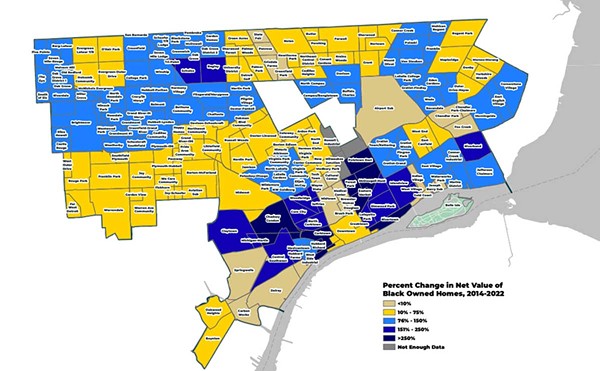First, County Executive L. Brooks Patterson battled to keep maps showing tainted sites from being produced at all. After activists and a few commissioners successfully fought to get the maps produced, Patterson’s administration refused to provide all the details activists called for.
Now Oakland County officials have refused a nonprofit environmental group’s offer to distribute the maps door to door.
"We don’t understand why they would do this," says Nolan Bennett, policy director for Clean Water Action. "We thought it would be a public service to get these maps into the hands of as many people as possible. We thought that was the whole point. Now it looks like another incident in a long line of attempts to suppress this information."
According to Bennett, Dr. Thomas Gordon, the county’s director of human services, first justified the refusal of CWA’s offer by saying the issue was already highly politicized and that having the group distribute maps would politicize it even further.
Gordon’s office is now directing calls about the issue to Oakland County corporation counsel Gerald Poisson. He says Clean Water Action told Gordon it wanted to use the maps as a way to generate support to help force the U.S. Environmental Protection Agency to reduce the level at which it deems arsenic to be a health threat.
"As a government agency we’re not allowed to spend money on advocacy programs," explains Poisson. Bennett insists Clean Water Action never told county officials they intended to use distribution of the maps as a way to advocate for new arsenic standards.
"That was never discussed," says Bennett. " I was very clear with Dr. Gordon that we saw distribution of these maps as a good first step in getting information out about the issue of arsenic contamination."
To obtain a map showing contaminated well sites in their area, residents can phone the Oakland County Department of Environmental Health at 248-858-1312. Maps are also available at county libraries, city halls, and at the Oakland County Web site.
Bennett, meanwhile, promises that his group will continue to advocate for more precise information on the maps. As it stands now, the maps simply differentiate whether arsenic has been detected at levels above or below 50 parts per billion. But the World Health Organization has determined that arsenic in drinking water at levels as low as 10 parts per billion can be hazardous.





